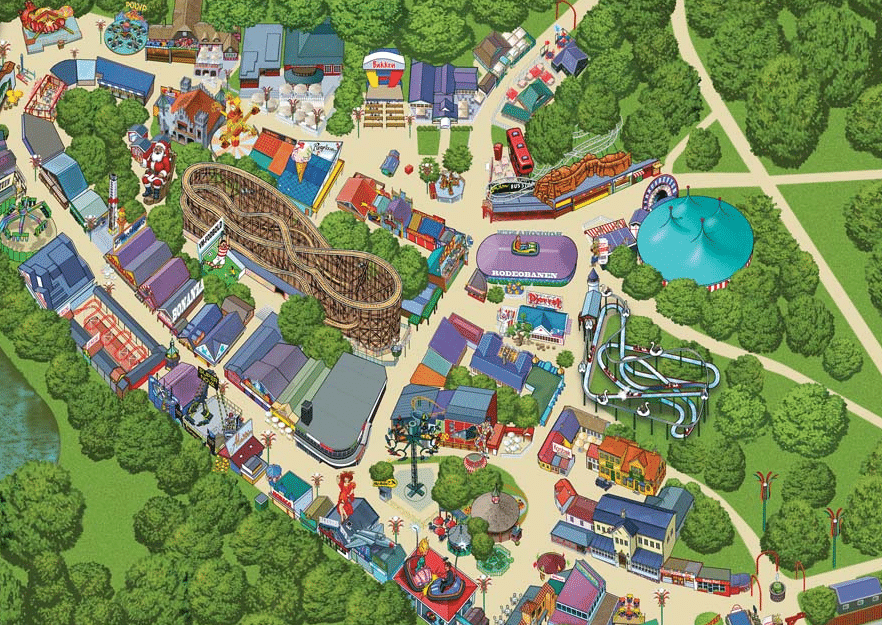Bakken Map and Brochure (2023)
Location: Klampenborg, Denmark
Years Active: 1583 – Active
Bakken isn’t just another amusement park. It’s the granddaddy of them all – the world’s oldest! They’ve been slingin’ thrills since 1583, right outside Copenhagen. Imagine the stories those rides could tell!
It’s a weird and wonderful mix of old and new. Think creaky wooden coasters and classic carnival games alongside flashy modern attractions. Want a taste of Denmark without leaving the park? Bakken’s got traditional food, parades, even live music to soak up.
Rutschebanen, the wooden coaster, is a must-ride, but it’s a rough one. Brave the bumps – it’s a piece of history! Another tip: those festivals get PACKED. If crowds stress you out, time your visit carefully.
What is the world’s oldest amusement park?
The world’s oldest amusement park is Bakken, located in Klampenborg, Denmark. Bakken, also known as Dyrehavsbakken or simply “The Hill,” has a history dating back to 1583 when it was initially established as a natural spring with medicinal properties. Over the centuries, it evolved into an amusement park, officially opening in 1583. Bakken offers a variety of attractions, including roller coasters, carousels, games, and entertainment, making it a historic and enduring destination for amusement park enthusiasts.
How old is Bakken?
Bakken is over 400 years old, with its origins tracing back to 1583. It initially began as a natural spring with reputed medicinal properties, which later transformed into an amusement park over the centuries. This rich history makes Bakken one of the most venerable amusement parks globally, offering both traditional and modern attractions to visitors.
When did Bakken start?
Bakken officially started as an amusement park in 1583. It originated from a natural spring that was believed to have healing qualities. Over time, Bakken expanded its offerings to include various forms of entertainment, rides, and games, eventually becoming the world’s oldest amusement park. It has continued to evolve and entertain visitors for centuries, making it a cherished part of Denmark’s cultural heritage.

